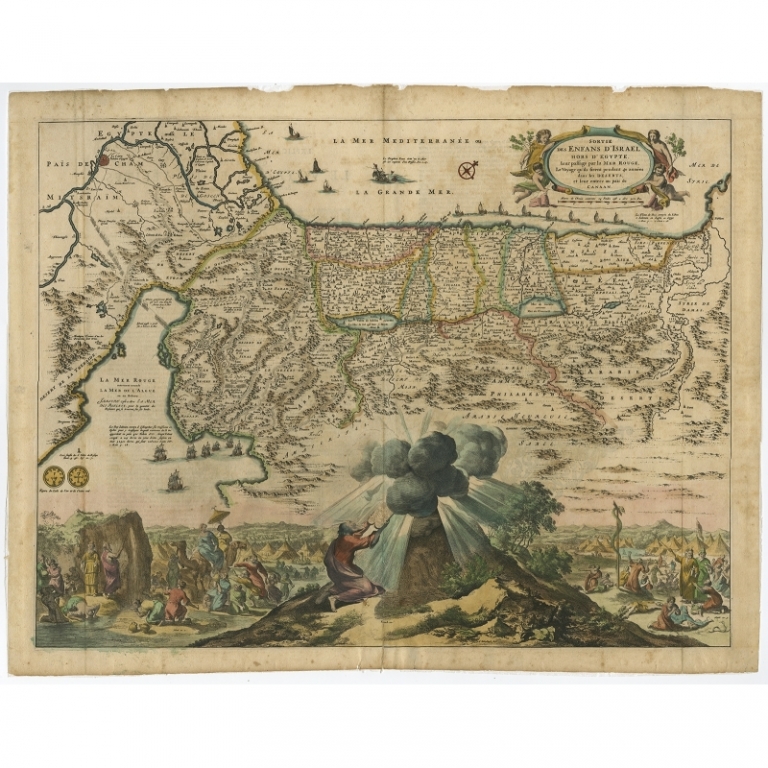FREE
WORLDWIDE
SHIPPING
No products
PCT-57992
Antique Map of the Departure of the Children of Israel for Egypt by Berchem (1669)
- Condition: Fair, given age. Several spots, mainly in the margins. Edges with several small tears; reinforced with acid free tape. Original folds. General age-related toning and/or occasional minor defects from handling. French text on verso. Please study image carefully.
- Date: 1669
- Overall size: 58 x 45 cm.
- Image size: 53.2 x 40.5 cm.
Worldwide
shipping

Description: Antique map titled 'Sortie des Enfans D'Israel hors D'Egypte leur Passage Par la Mer Rouge.' Departure of the Children of Israel for Egypt, their passage through the Red Sea, their forty years in the desert and their entry into the country/land of Canaan. Three vignettes at the bottom from the life of Moses, with the central image of Moses receiving the 10 Commandments (Exod. 20), the left image of Moses striking the rock for water (Numb. 20.11) and gathering the people and taking the rod from the Lord (Numb. 20.9). The cartouche is illustrated, and there are ships (much later European style vessels) on the Mediterranean and Red Seas. French text on verso. From the large folio French Elzevier bible published in 1669. Ref: Shirley. Hoogsteder Mercury, 13/14, p.60.
Artists and Engravers: Made by 'Nicolaes Berchem' after 'I. Elzevier'. Nicolaes Berchem (1620-1683), who is not as well-known for his religious drawings as for he is for landscapes, but was a versatile artist. A prolific Dutch artist, Berchem often painted in the Italianate style, and became well-known particularly because many of his paintings were reproduced as prints. In 1669 the Elzevier publishing house put out a French Bible, for which they enlisted popular artists to illustrate a frontispiece and maps. The La Sainte Bible appears to have been planned at least a decade before its publication, and was to include 5 maps to illustrate several stories. Berchem worked with Jan de Visscher (1632-1692) and Abraham Blotelingh (1640-1690) as engravers of the five maps. He had worked previously with Nicolaes Visscher, so he as clearly familiar with these printing houses. The Elzevier publishing house was a natural choice for the publication of this new French edition of the Bible. Established in 1581 by Louis Elzevier, a Protestant émigré from Louvain, the firm flourished in the seventeenth century. Through the years, 15 members of the Elzevier family assumed control of the business, operating printing shops in Leiden, The Hague, Utrecht and Amsterdam. The Elzeviers specialized in learned books that were noted for excellence of typography and design. Although the fame of the publishing house did not rest solely with biblical publications, in 1663 Elzevier had published in large format an especially splendid edition of the Statenbijbel, the authorized version of the Dutch Bible.



